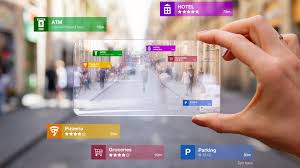Quick Guide
How will NFTs, cryptocurrencies, and the metaverse interact with one another?
In the future, the majority of humans are likely to experience the metaverse. The goal of this dream environment is to merge the physical and digital worlds. Additionally, although the metaverse offers numerous prospects for cryptocurrencies and NFTs, traditional payment methods will also be usable in virtual reality.
What exactly is Metaverse ?
The metaverse, often referred to as the “new internet,” promises to fundamentally alter how we live our lives, much as the internet did. The metaverse, to put it simply, is the idea of a virtual, parallel reality where individuals can design their own worlds.
People will have the ability to make avatars of themselves in this environment, communicate with others, and take part in activities like working, shopping, cooking, playing sports, etc.
The Metaverse payment gateways
Similar to the physical world, there are several ways to make payments in the metaverse, but the most popular ones are through blockchain and virtual currencies, which users may use to buy goods and services from businesses in the metaverse.
Cryptocurrencies stand for the financial link between the real world and the internet. By creating a cryptocurrency wallet and using an exchange like Coinbase or Binance, users who wish to buy anything in the metaverse can convert their local fiat currencies into cryptocurrencies.
However, each metaverse has its own set of acceptable digital currencies, thus before making any exchanges, users must be aware of the payment options supported by the site.
NFTs are equally crucial to crypto. Non-Fungible Token, or NFT, stands for a unique thing that each token represents, with blockchain records that contain data about the digital file.
Read more about: What is the Virtual Reality of Metaverse
Due to their simplicity of transfer between users, NFTs have grown rather popular in the metaverse as a form of payment. NFTs are a reliable approach to provide owners with proof of ownership, a safe means of value transfer, accessibility, and anonymity since they employ blockchains similar to those used by cryptocurrencies.
What the Future May Bring
Although it is still in its infancy, the metaverse has a bright future. We may anticipate a proliferation of payment options being made available to sellers and customers as blockchain technology and the metaverse continue to develop. Depending on the products or services provided, merchants can benefit from the increased interest in the metaverse by taking cryptocurrencies and NFTs.
Traditional Payment Methods and Fiat Money in the Metaverse
Although cryptocurrencies are the most widely used form of payment in the metaverse, fiat money and more conventional payment methods are still accepted.
Unlike the 1-click credit card payments we are all familiar with and love, and in the case of Brazilians, Pix, the instant payment method that can be used by simply scanning a QR code displayed on the screen or copying and pasting the Pix code into the mobile app, paying with cryptocurrencies involves a lot of friction.
Also read: 5 Ways the Metaverse Will Change the World
Imagine if the metaverse could combine the ownership and security that cryptocurrencies offer with a simple payment system that is similar to the ones that users are already accustomed to. A frictionless payment system can open up the metaverse to new users and make it easier for nearly anyone to access these virtual worlds.
Metaverse Case Study:
DMarket provides Boleto Flash® from PagBrasil.
DMarket is a market where gamers may exchange virtual goods (skins and other in-game stuff) to customise their gaming experiences. Users of the DMarket platform can top up their accounts with cryptocurrencies like Bitcoin, Ethereum, Litecoin, and more in order to make purchases.
However, there are other forms of payment in addition to cryptocurrency. Traditional payment methods are also an option for users. And the same is true for Brazilian users: DMarket provides the option of paying locally, including PagBrasil’s unique Boleto Flash®.
Customers can copy and paste the boleto barcode into their banking or digital wallet app to quickly and easily make payments using Boleto Flash®. Unlike traditional boletos, which can take up to four business days to be certified, the payment is confirmed in less than an hour. As an alternative, they can pay the boleto using Pix and receive immediate payment confirmation.
What a great approach to make payments in the metaverse frictionless!


Recent Comments